
T&I News 12 2023…
Firstly, an apology for the long gap since the last blog post – I’ve been away and also dealing with some family matters, so haven’t had the chance to update this site. To catch up, here is a roundup of various newsworthy occurrences around the team. Whilst on holiday Gemma and I had a chance to introduce Thomas to the delights of the Talyllyn Railway, catch up with Matt Ellis and also visit the Corris Railway – spot the theme!
Kerr Stuart 721
Below: One area of repair that is required on 721 is the well tank – the large casting seen here. This is the only water storage on the locomotive and serves as the front frame stretcher/spacer too. It has been perforated at some point, by the coupling jaw being forced back through the buffer beam. We intend to cut the buffer beam out in the middle, repair the tank, and then weld the beam back in. It is possible a new form of jaw will be fitted, to try and avoid a repeat of the previous occurrence.
Below: With the springs fitted, the axleboxes have now been made captive with the underkeeps. The coupling rods will now be overhauled and fitted, before the rolling chassis is tested on the narrow gauge to check for clearances etc. The eccentric sheaves also remain to be overhauled and refitted. It will all then have to be dismantled to enable it to be cleaned and painted before final assembly. Each component has had to be made to fit its location – allowing for the distortion of the frame plates.
In order to assess how well all of the heavily re-machined components were settling in together, 721’s chassis has visited the narrow gauge railway for some running and clearance trials. It is seen here in what will become a stone engine shed, based on Stephenson’s Chadwick Nick building in Crich. Various permutations of running were tried – the main exercise being to determine how the locomotive will fit, given it’s wide back to back dimensions (it is 1/8 inch wider than anything we’ve run before and nearly an inch wider than our normal standard). The reason for the width has been to accommodate a substantial outward bow in the frameplates – correcting such would have gone well beyond our remit for this project. With some adjustment to three of the turnouts, 721 should function quite happily at Beamish though.
The buffer beam remains to be repaired (along with the replication of the buffing arrangement) and the rest of the motion will require overhaul. We will then test the rolling chassis again before it is dismantled and moved to the paintshop for Rebecca to paint. Meanwhile, the boiler overhaul is continuing at John Fowler in Cumbria, and I believe the new front tubeplate will shortly be riveted into the barrel.
Colliery Engine Works
Below: No.18’s tank and cab have been temporarily refitted – partly to store them safely but also to present a more complete locomotive for display purposes. We’ll look at having the boiler overhauled under contract at a later point, as well as fitting in the mechanical overhaul that is now needed, though this may be a little way off.
Below: 1219’s stay with us has been extended and it is likely to remain with us until late summer now, usually operating on Monday/Tuesdays, in turn with Glyder on the narrow gauge railway.
Below: A view of the NER 559’s boiler, which has now been chained down in such as a way as to look more period-appropriate (no slings!).
Working at height and inspection pit safety
Below: We recently reviewed the risk around open pits on site, including inspection and servicing pits (and there are quite a few). This follows something of a run of serious accidents in the heritage sector involving falls from height, often into open pits. We had procedures in place to leave most of our pits covered by vehicles or rolling stock, but have now added a second level of protection, in the form of these plastic pit boards. They can readily be removed to allow for inspection/servicing work, but when in place ensure that the pit does not present the same hazards as without them. We have them at the Waggonway, in the Colliery, tram depot, bus workshop and here at Rowley.
Around the site
Below: The Great Western Railway ventilated van (Mink), repainted in recent years but not displayed, has been placed in the goods yard. Whilst of less-local relevance, it is nice to have a very presentable wagon on display at Rowley.
Below: The Waggonway’s Brampton coach has now been adapted to carry wheelchairs, and to enable the slight step to be bridged, a ramp has been obtained and placed for convenient use – as seen here behind the wooden screen.
Below: Peter has bene busy with his paints again, producing this charming sign to alert would-be passengers as to the perils of early railway travel!


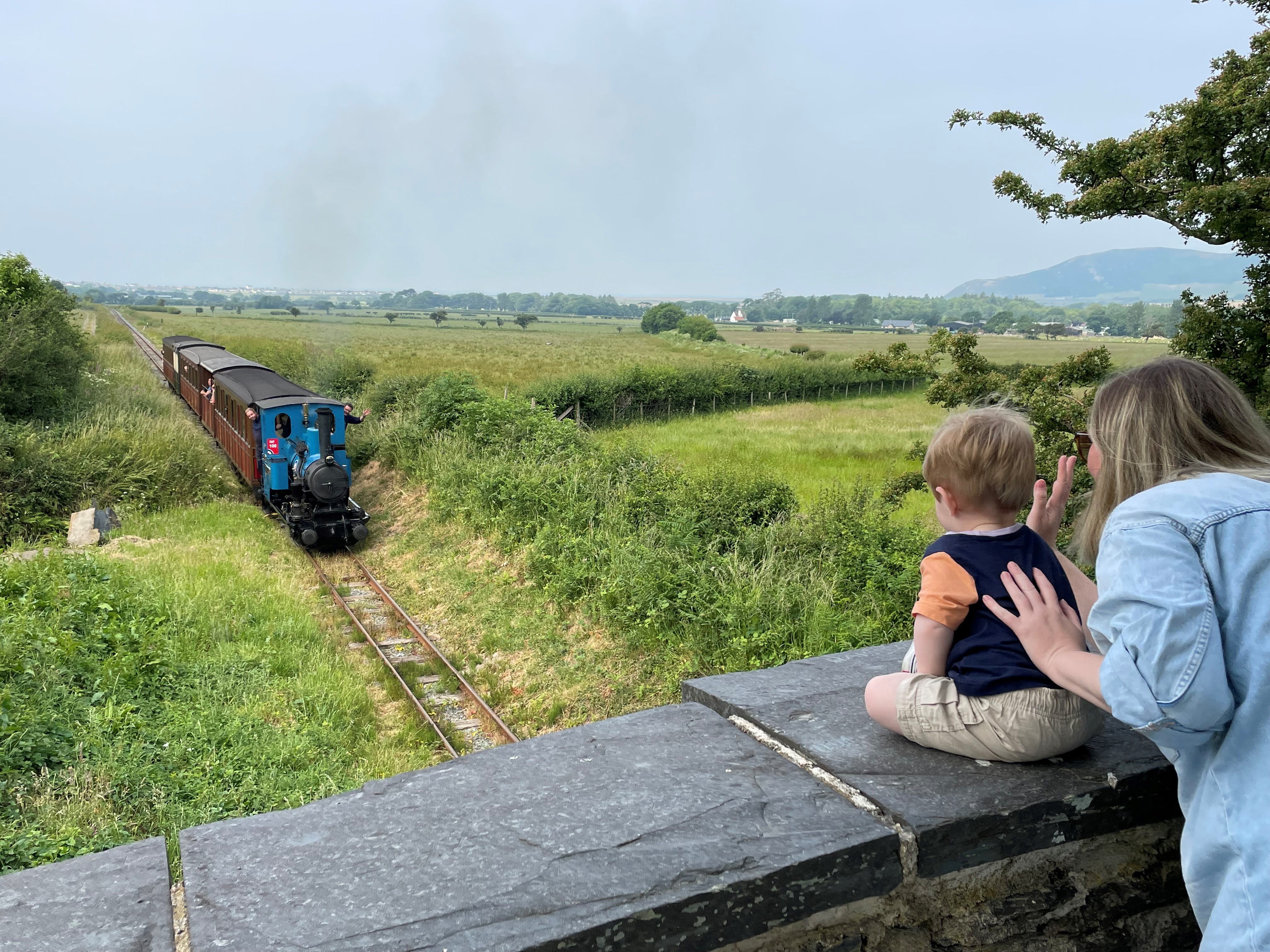
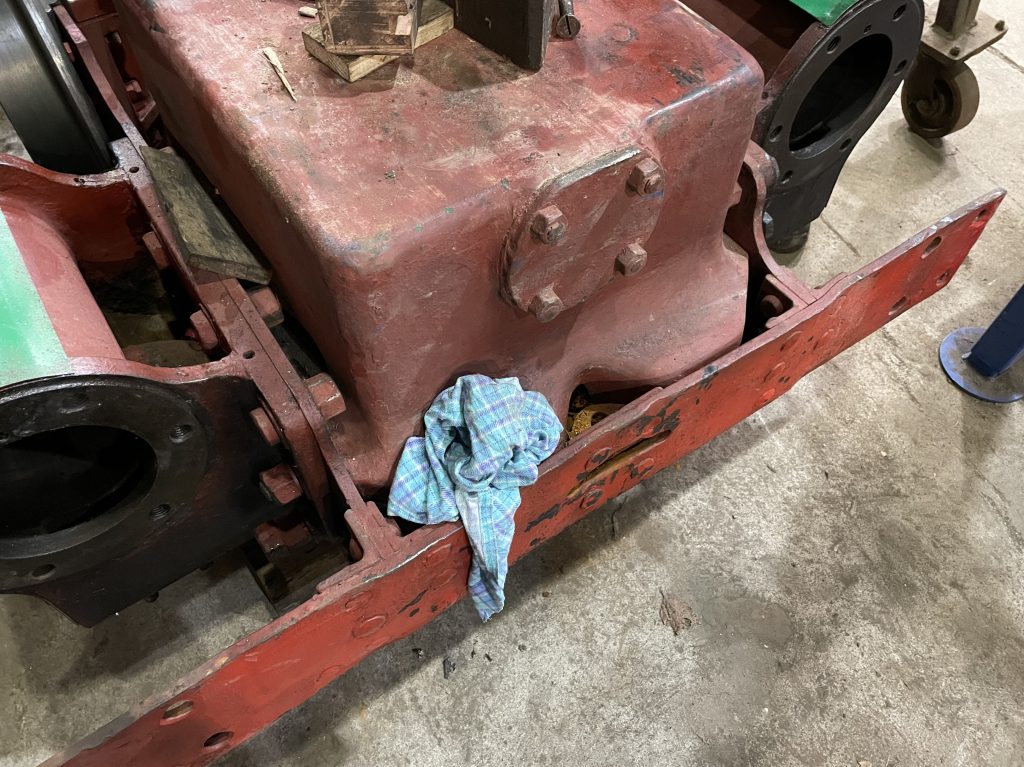

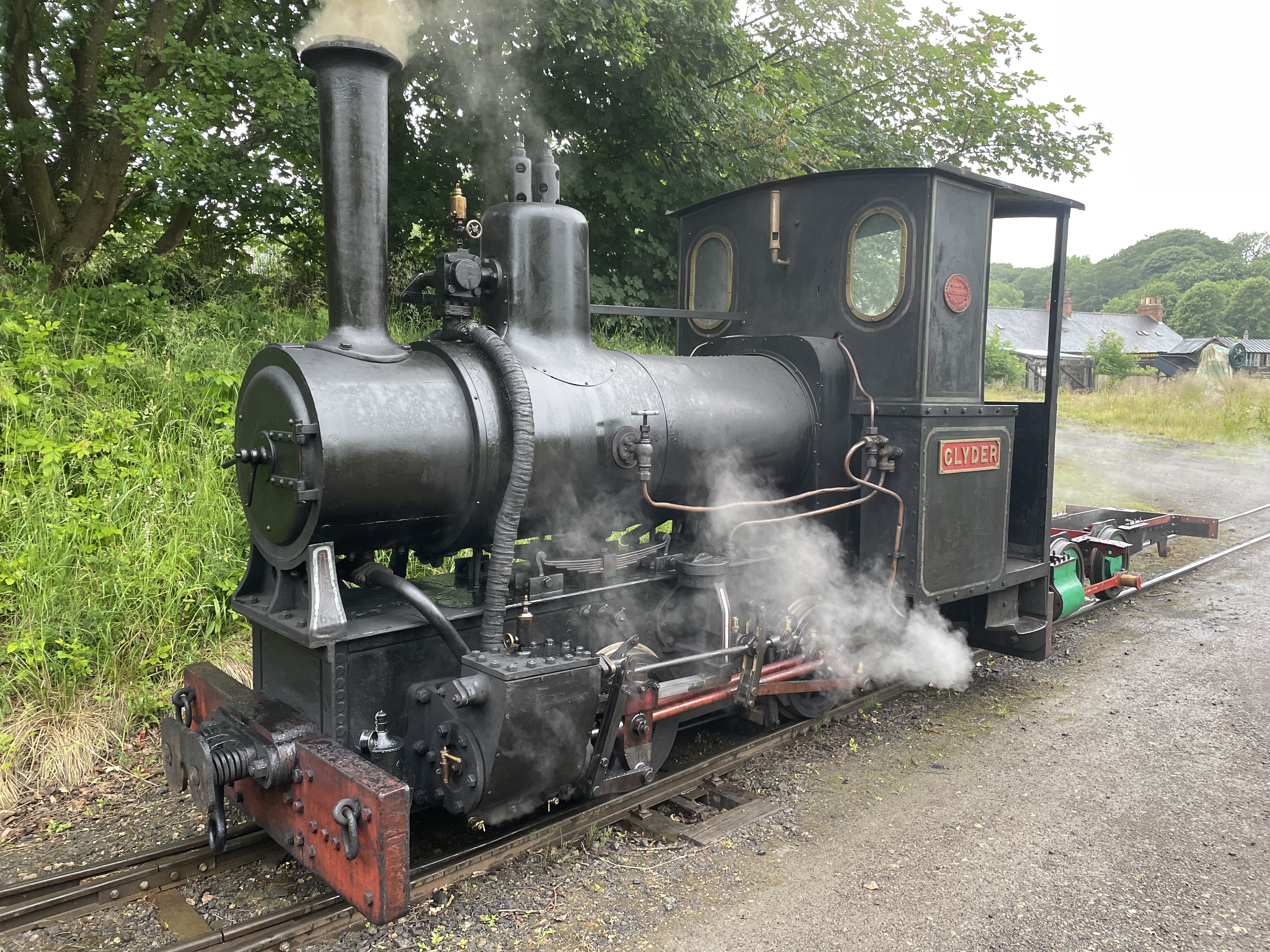
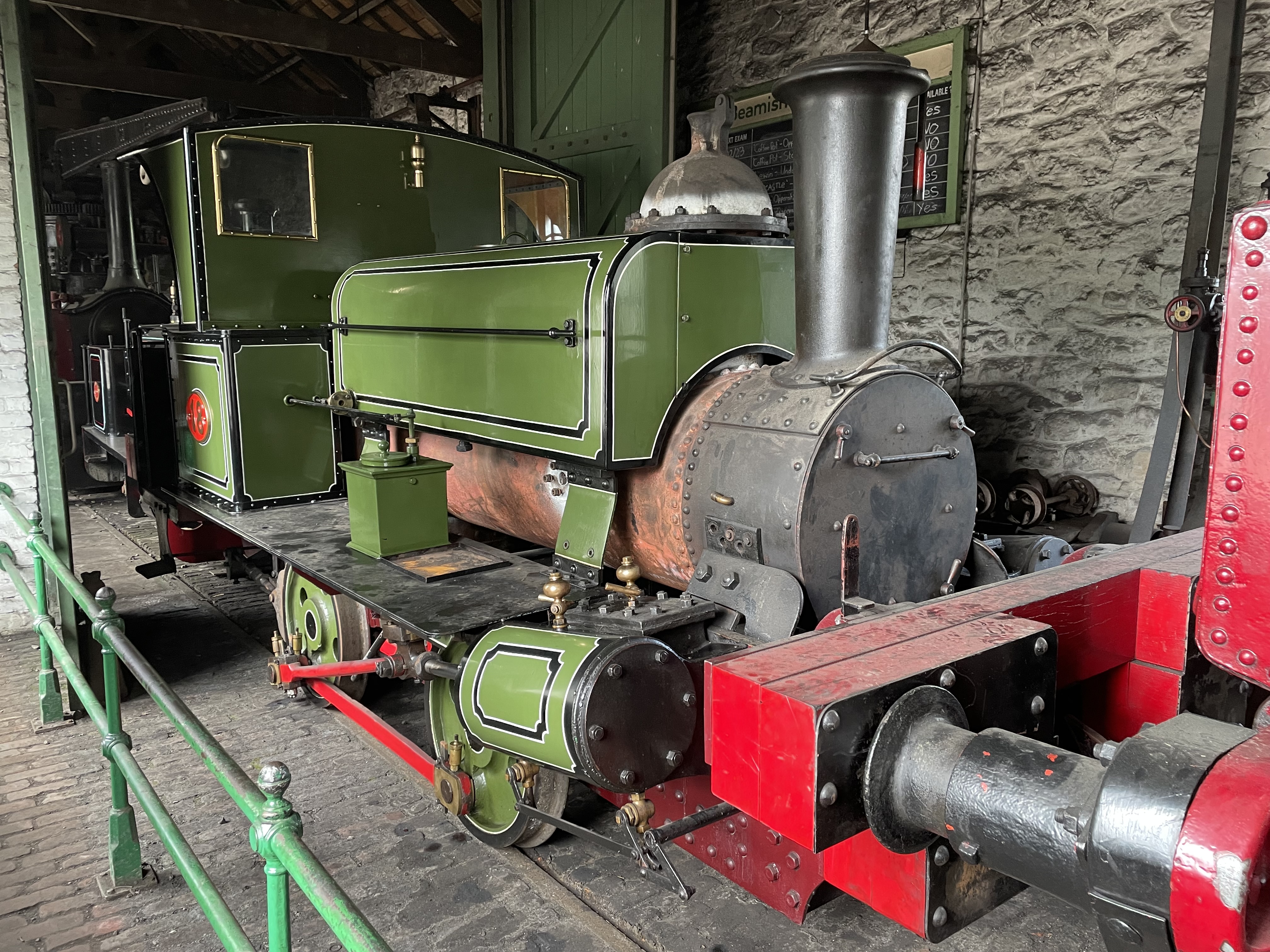

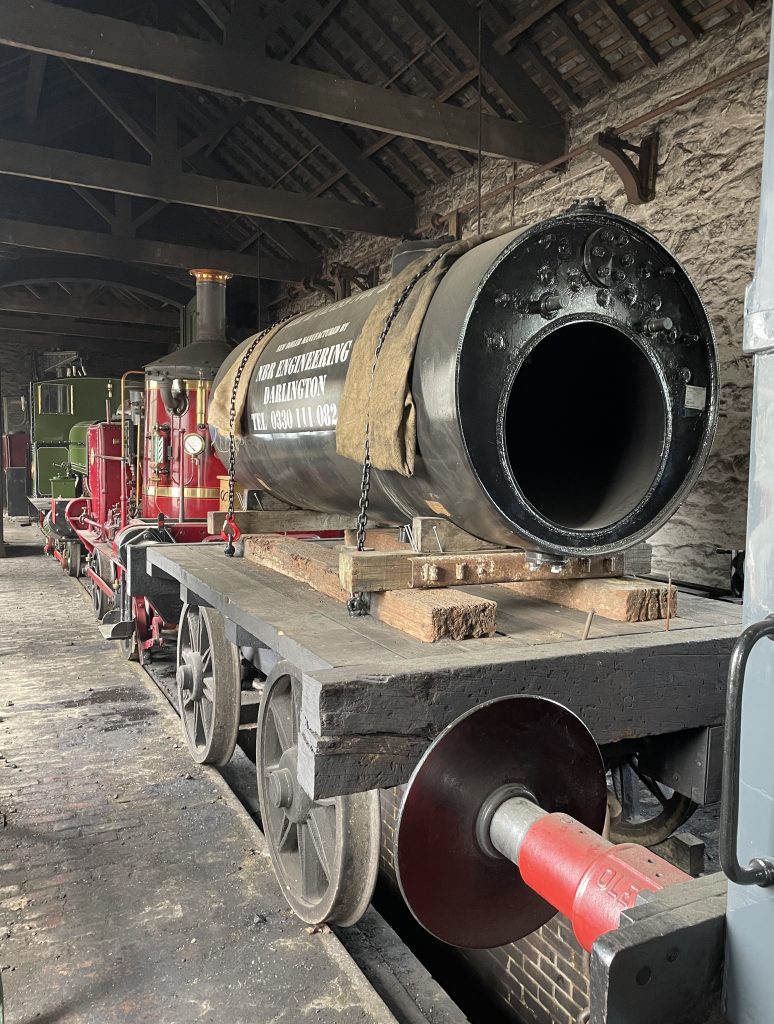
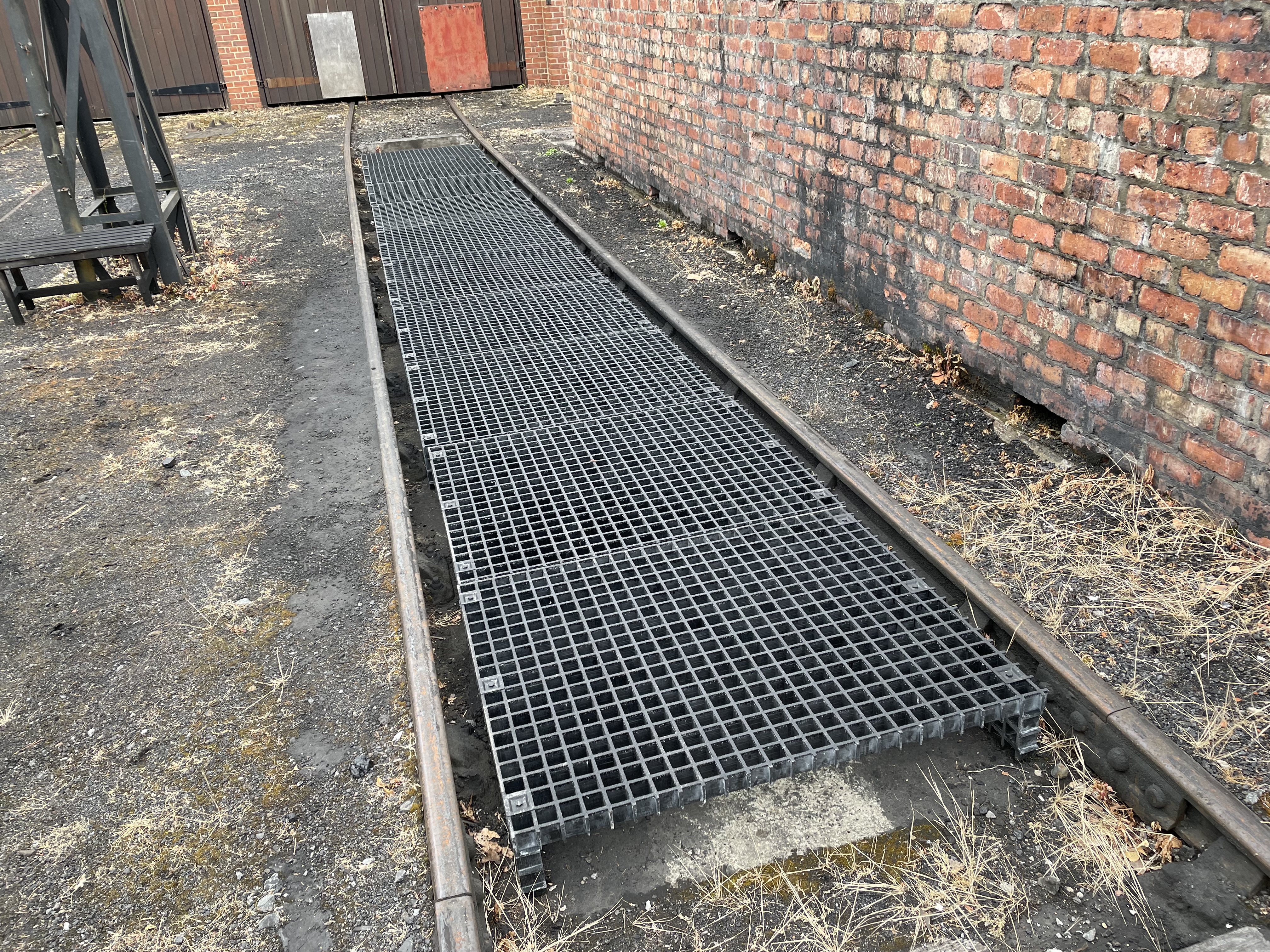
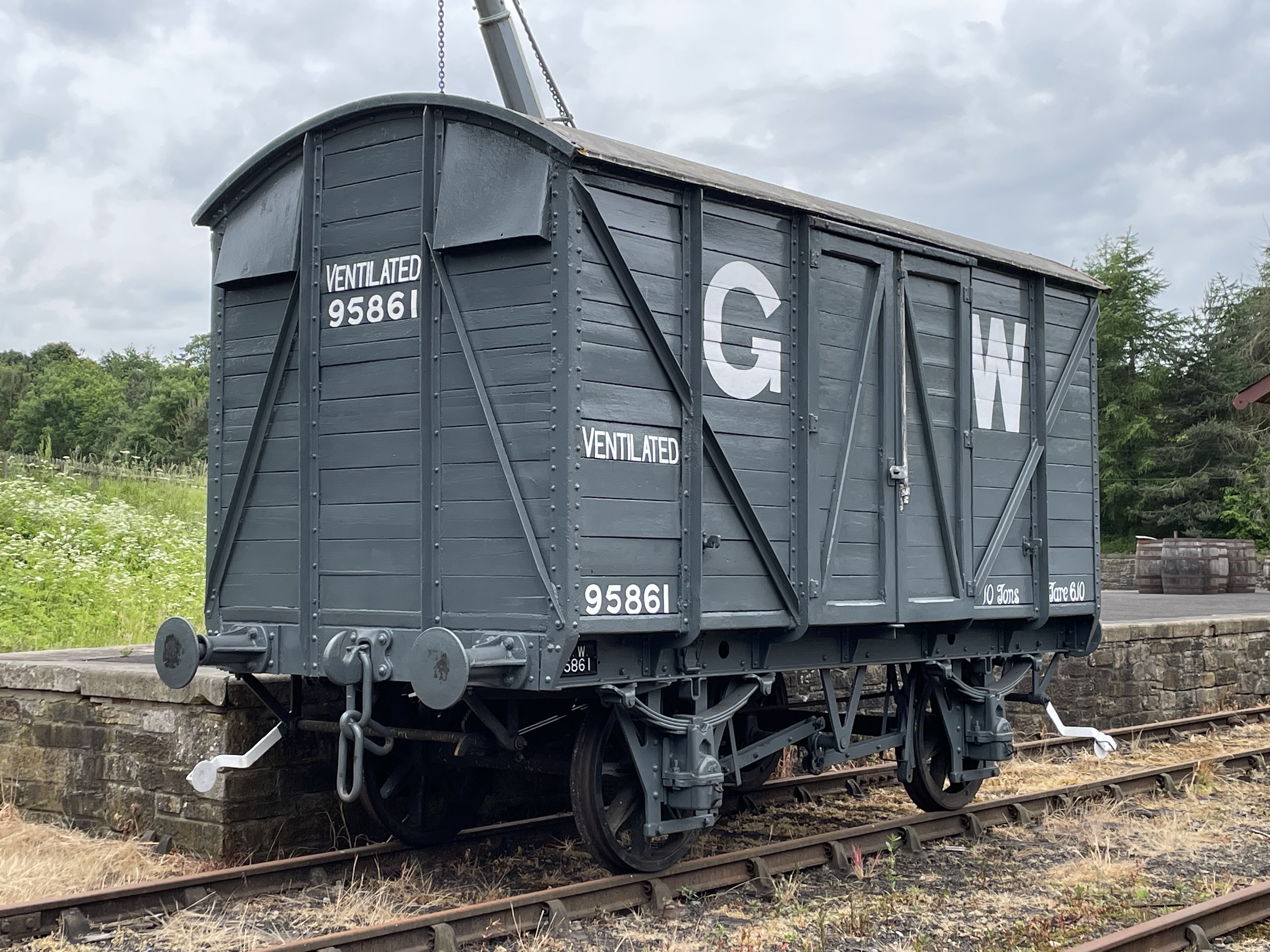
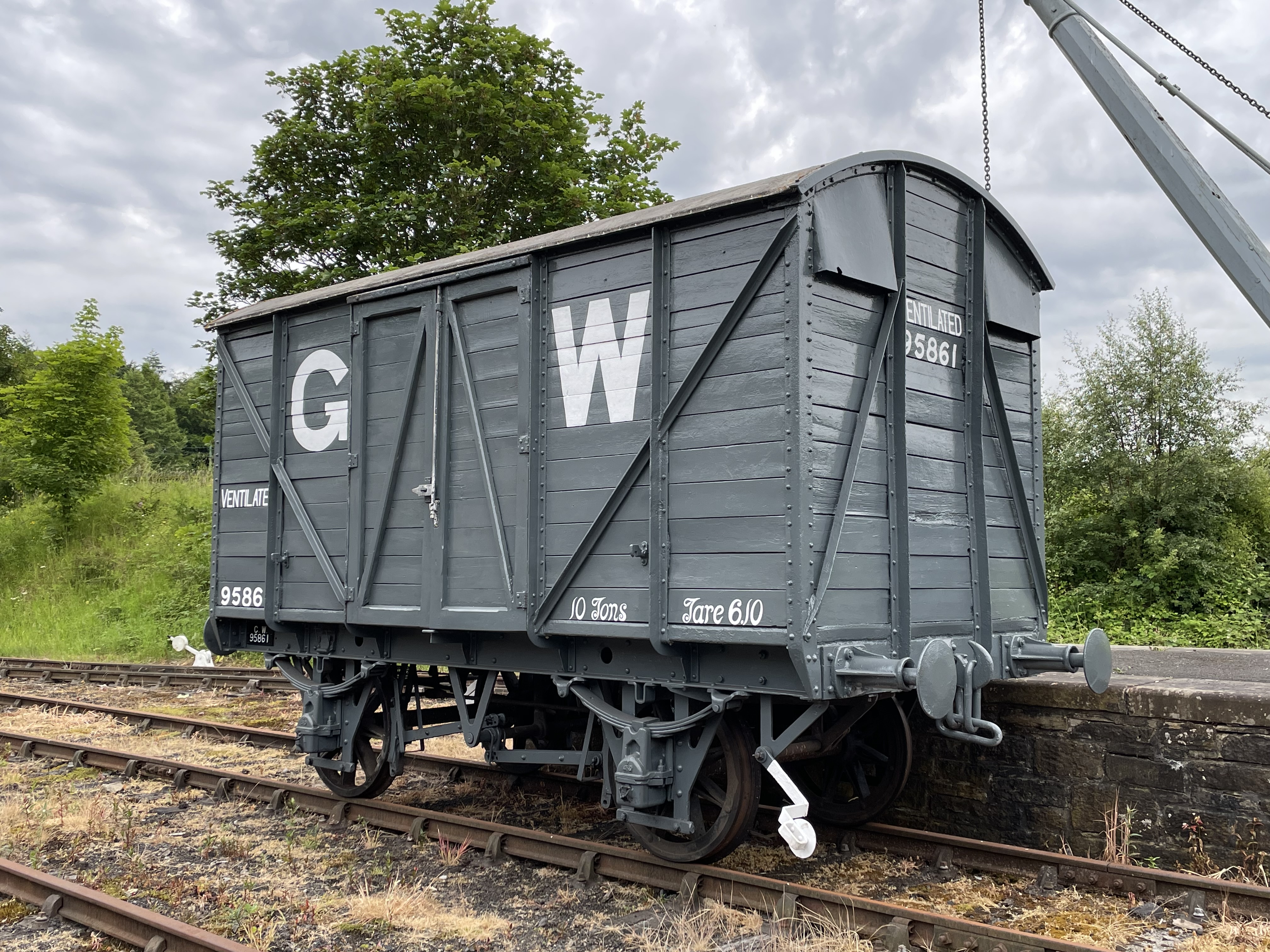
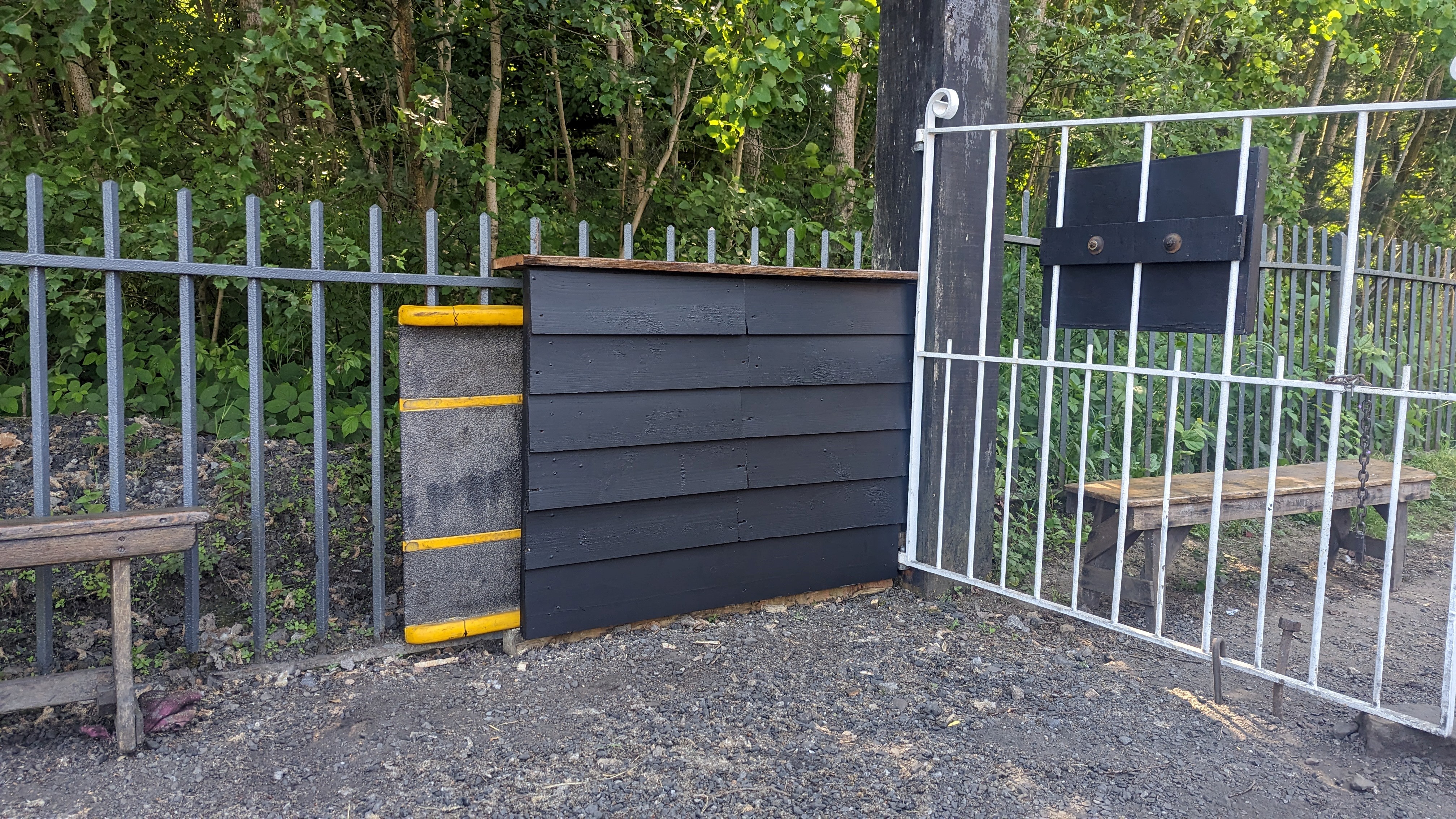






Recent Comments